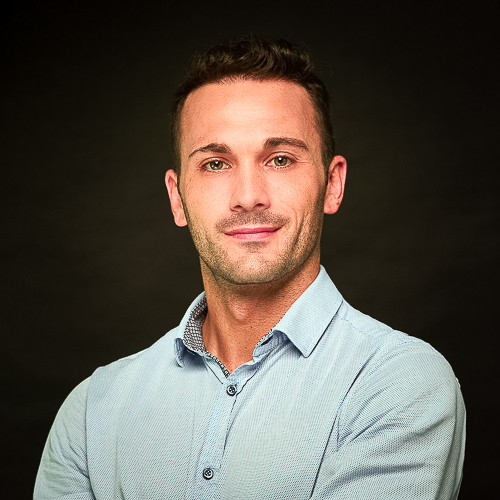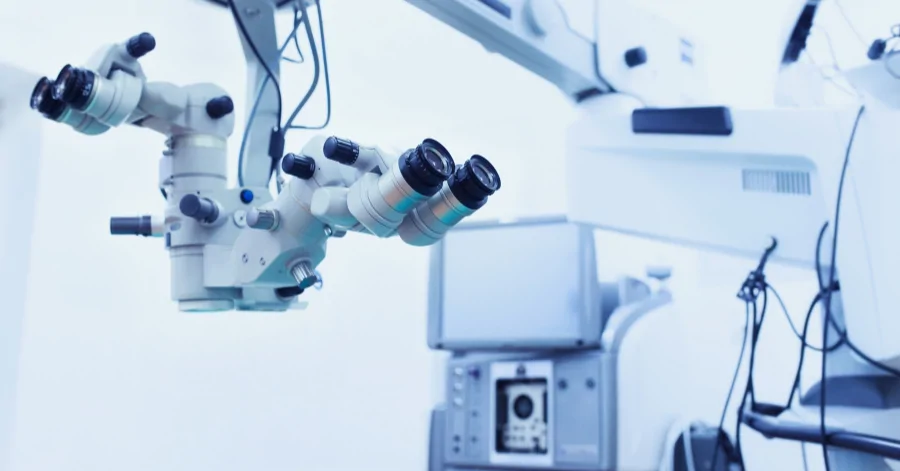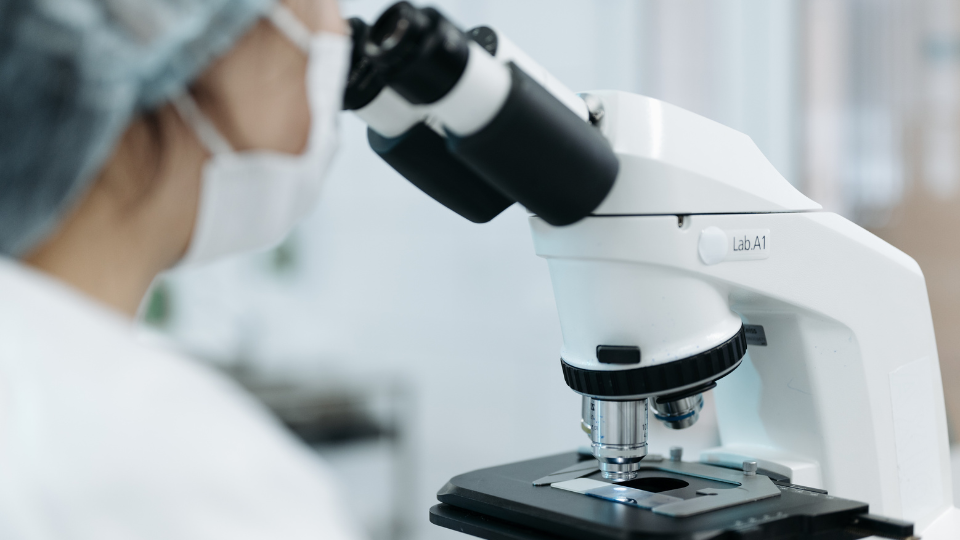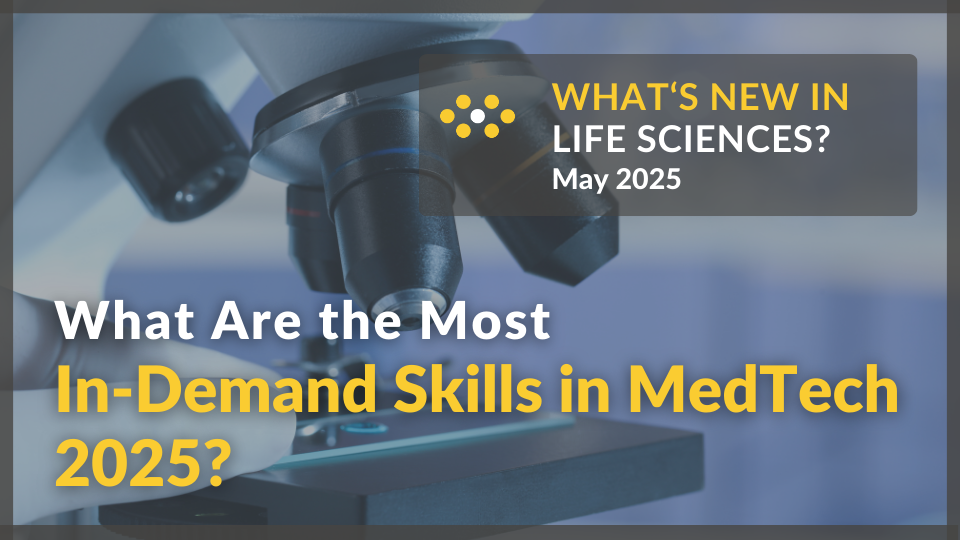In the latest in a series of opinion pieces by our specialist business leads we hear from Dustin Hoeger. He heads up our advanced engineering recruitment services across the DACH region, from our offices in Cologne. Dustin works with the dynamic software and system architects, and software developers, who are at the forefront of technology, driving the rapid advances we will witness in the coming years. Here he discusses how embedded software and increased connectivity will help to change the world. He describes how this has created a skills shortage, and the type of people his clients urgently need.
Imagine a world without road traffic collisions, in which your vehicle communicates with other road users and the streetscape to keep your family safe. To minimise congestion and improve your carbon footprint. If water supplies become increasingly scarce, consider a smart water system and sophisticated infrastructure that will test every gallon for pollutants, while distributing water effectively and efficiently, with minimal waste. These concepts may read like a chapter from a science fiction novel, but they are now very real emerging technologies, heralding an era of great change through the next decade and beyond. Right now, we are moving through an age of rapid technological transformation. A pioneering fusion of progress in artificial intelligence (AI), the Internet of Things (IoT), robotics, genetic engineering and quantum computing is occurring. The result of which will improve the way we live, work and interact with one another.
The fourth industrial revolution
‘The Fourth Industrial Revolution (4IR)’, will require dramatic change across all business sectors. The ambition of which is to future proof our systems and supply chains to meet the challenges of a post-pandemic planet.
This progress is steering the world towards a safer, greener and more sustainable future. But behind every autonomous car, every robotised production line - and every kitchen of every Smart City apartment - a complex framework of embedded systems is likely part of it The global lockdowns have demonstrated the necessity of automated systems. Many companies were forced to shut down operations, leading to supply chain disruption, or even business failure.
Embedded systems are already everywhere, across industries; making sure our products work properly and safely, operating our washing machines and cars, and guiding a robotic arm on an automated production line.
The technology is moving fast, creating demand for talented IT professionals. The first tier suppliers and original equipment manufacturers (OEMs) need a variety of specialists within embedded systems, primarily software developers as well as software system architects or respective test engineers. And they needed them yesterday!
I head up a team of Advanced Engineering recruitment consultants and resource associates. We supply exceptional people to the automotive, aviation, industrial automation, medical device, robotics, defence and aerospace industries. We work with clients and candidates across the Dach region, with a focus on the German market.
Germany has a reputation for advanced engineering excellence
Germany is renowned for the strength of its advanced engineering. Nationally we make everything from the premium appliances offered by Siemens, through to great cars from Audi and BMW, and futuristic production line robotics developed by numerous innovative OEMs within the field of industrial automation.
I learn about some fascinating projects in my position. I’ve placed aerospace and aviation-focused candidates into roles in which they’ve worked on making planes safer from the risk of remote hijack. My candidates have worked on projects to help the OEMs like BMW or Daimler to transition from traditional to electrical vehicles, via hybrid models.
A lot of my business comes from the ‘Mittelstand: the engine room of the German economy, consisting of circa 10,000 privately owned companies, with between 500 and 5000 employees.
Most of these companies require embedded software specialists who can connect their devices to the cloud. This demand for people has created a national skills shortage, an immediate and pressing demand.
The automotive industry provides as many as one in seven in all of Germany’s jobs. And it is in this sector we are witnessing some of the most dramatic changes. Currently some 1.35 million people are killed in road traffic collisions globally and the industry creates a lot of pollution. Autonomous vehicles will help us to save lives and protect the planet.
A driverless future
Autonomous technologies are now commonly accepted in the guise of advanced driver assistance systems (ADAS) – think speed-limit warnings, traffic alerts, adaptive cruise control, emergency braking – and will gradually change customer behaviours and readiness for driverless vehicles. But, the eventual roll-out will only be able to move as fast as legislation allows, and we will probably see the US leading the charge, with things moving slower across the European Union.
First, we will need to link up the streetscape with the autonomous vehicles. For example, your car will communicate with traffic lights to improve traffic management. If someone steps into your path on your way to the lights, both car and traffic lights will need to react. Every aspect of the road network, or smarter city, will need to be updated to enable this change - we are working with clients and freelancers who are developing these solutions right now. It’s genuinely exciting times!
Another interesting area to contemplate is the fusion of artificial intelligence with embedded software. Just like us, our vehicles will become better drivers, the more time they spend on the road. They will learn to analyse the raw data they receive, helping them to navigate and travel with increased precision and speed. And then there’s the so-called gamification of autonomous driving systems being developed by Tech companies like Argo and Waymo, developing precisely scanned roadmaps that may be as important as sensors in the race to a fully-autonomous, driverless future.
The Internet of Things (IoT) and connectivity
There has been a great deal of talk about ‘The Internet of Things (IoT)’ in recent years. This describes the network of physical objects that come embedded with sensors, software, and other technologies for smoother connection and data exchange with other devices and systems over the Internet.
People now tend to talk more about ‘connectivity.’ The ability of advanced embedded devices to interact with one another. For example, I get up early and need to drive to a meeting. It’s cold outside, so I use my mobile phone to heat my car from the comfort of my bed. I go to the fridge to get some breakfast and everything I want is there; my fridge checks the contents, and orders my supplies - which are then delivered autonomously. These early applications show how improved connectivity could make life more convenient in the future.
I am extremely enthusiastic about the technology and how it can toughen our resilience to the many challenges we face. But progress must be guided wisely. It must enhance our lives, not dictate them. If you take the concept of smarter cities, for example, I feel it’s important that we maintain the original character of our city centres and suburbs, while embracing change.
My own interest in all things electronic began when I started working for my family’s car dealership. I gained a solid understanding of the automotive industry and a passion for sales. Later, as a student of international business, I enjoyed a placement with airline Lufthansa and learnt more about the technologies powering the aviation industry.
Now I mainly work with embedded software developers and software architects , as well as directors, VPs or CEOs in that field. The developer focuses on the individual components of the IT solution; the architect offers direction and oversees the whole project.
There is currently more work of this nature than there are suitably skilled people to fill the roles. Those in high demand come from a background in electrical engineering, computer science, technical computer science or physics. And they are enthusiastic about their craft. While they thrive on academic interaction, the technical challenges they face and the skills they learn in a professional environment, many of them enjoy programming in their free time as well.
A demand for C and C++ programming skills
They have skills that can be applied to any industry. Yet the ideal candidate will bring several years of experience in my client’s sector. They need to be capable with a combination of embedded and object-oriented software development skills depending on the product and safety guidelines that needs to be followed.
The salaries offered are competitive. With senior developers earning between sixty and ninety thousand Euros, and software architects attracting six figure sums. Where clients have surges in project demands, or require short-term supplementary niche skills, we can quickly mobilise our extensive network to complement their in-house teams with external freelancers or temps, especially whilst finding longer-term permanent solutions for them.
Head of Engineering, an Embedded Architect or Principal Software Engineer; regardless of the role and seniority there are some common traits my clients are usually looking for. They want problem solvers and inventors who enjoy overcoming highly technical and complex problems on ground-breaking projects, who will roll up their sleeves and develop the software and hardware of the future. I mean, what could be better than developing a system that furthers the advancements of rocket science? The most ambitious developers seek nurturing work environments where they can learn from their peers. And the software architects who have invested their lives in this field enjoy sharing their knowledge. A combination which creates a synergy that drives successful projects and encourages people to stay with employers for the long haul.
Language is a barrier to accessing talent
The skills shortage in Germany is not helped by language barriers. Many companies are not ready to embrace English, despite the international opportunity it offers. Even before the pandemic, this created a restricted pool of national candidates. In order to keep up with international and corporate competition, more German companies will need to welcome more English speaking, international talent, once restrictions on mobility are relaxed.
Recruitment support across the whole V-Model lifecycle
My team are vertical market specialists, which means they become market experts in their area. They form strategic partnerships with HR, talent functions and heads of engineering departments. Helping them to build stronger value propositions to attract staff, as well as supplementing their own efforts to help them find, attract and hire the talent they need.
We do much more than simply finding and placing exceptional candidates. We provide specialist recruitment services across the V-Model lifecycle and can help you to satisfy your fluctuating hiring needs. Ensuring you have the experts you need, when you need them, to meet demand peaks. We can also help you with value-add services including market mapping, competitor analysis, interim contract solutions and recruitment process optimisation. Another key benefit our clients experience is future talent pipelining which we offer for bigger projects when there will be ongoing hiring demand across various departments, making sure we screen the market for experts before clients actually need them means we can deliver the talent they need to meet their needs in a shorter time period.
Ultimately all these things lead to improved time-to-hire, cost-to-hire and quality-to-hire. Freeing up more of your time to deliver innovative projects and keep the German Mittelstand dream (the holy grail of German Engineering psychology) alive.
CONTACT DUSTIN TODAY






